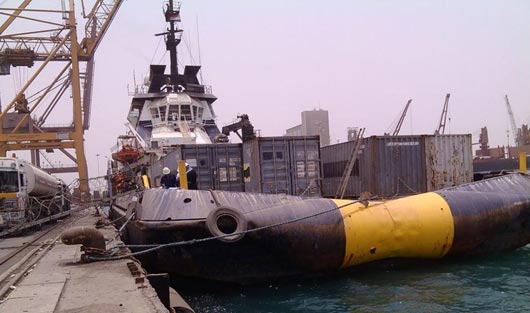
Local Editor
With its dockside machinery destroyed in an air strike at the beginning of Yemen’s 20-month-old war, the major Red Sea port of Hodeidah is struggling to unload food and fuel needed ever more urgently by a population riven with hunger and disease.
Hodeidah was the entry point for what port officials say was 70 percent of the Yemen’s food imports as well as humanitarian aid. Food deliveries have been cut by more than half, they say.
Before the war, which has killed more than 10,000 people and displaced three million, the port bustled with workers, sailors and shipping agents trying to ensure smooth delivery of vital supplies to the impoverished country’s 26 million people.
Jets from the Saudi-led Arab coalition disabled the port’s four giant cranes and they are still out of action, officials say. Other dockside machinery has also been destroyed.
Rubble from last year’s Aug. 17 air strike still lies strewn on the dockside.
"There is no more work left for us," said Ahmed Abdo, a port worker.
"We used to have three or four ships at the port and we would unload them in two or three days. Now, only ships with their own cranes are allowed to enter."
UNLOADING BY HAND, TRADING ACCUSATIONS
Last week, the port looked nearly deserted, with only a few workers laboring under blazing sun to unload a cargo of corn from a ship by hand into a waiting truck, now that the pipes used to funnel the grain into silos have been destroyed.
After last year’s attack, the Saudi-led coalition spokesman, General Ahmed al-Asseri, said that coalition jets had targeted a naval base used by the Houthis within the port.
The Arab coalition says the Houthis routinely hold up aid deliveries and divert resources to the war effort. Sources in the aid community, however, have denied knowledge of any such delays.
Port officials and shipping sources also said they were not aware of any aid vessels being held by the Houthis, though they noted that port registry had shown that three cargo ships had been held up by court orders due to commercial disputes.
The central bank problems providing lines of credit to finance imports is also causing delays.
"Until just before 2015, Hodeidah port achieved a boom in revenues in non-oil resources exceeding 30 percent in average growth," said Captain Moahmmed Abu Bakr Ishaq, the chairman of the board of the Red Sea ports, which includes Hodeidah. "But the ports infrastructure has been destroyed by the coalition."
FACING FAMINE
U.N. emergency relief coordinator Stephen O’Brien told the U.N. Security Council last month that Yemen was close to famine, with more than 21 million Yemenis suffering from food shortages.
The U.S.-based Famine Early Warning Systems Network, run by the U.S. Agency for International Development, estimates that a quarter of all Yemenis are probably in a food security "emergency" - one stage before "catastrophe", or famine.
It says the areas worst affected are parts of Taiz province and southern coastal areas of Hodeidah province.
Figures provided by the port showed that wheat and barley imports fell 11 percent from January to October this year, while livestock imports have completely stopped.
Awad Said, the port supervisor, said that restrictions imposed by the coalition on entry of ships after the start of the war had raised insurance premiums and cut the number of vessels entering the port by more than half.
Ishaq said that about a million tonnes of food supplies entered through Hodeidah last year, a third as much as in 2014.
The number of containers dropped by 54 percent to 142,000, down from 300,000 in 2014, he said.
After the 2015 raid, officials said Gulf Arab jets bombed the port nine more times. According to Maritime Executive, an online specialized outlet, air strikes have hit a berth, cranes, a World Food Program warehouse, the port control building, port authority warehouse and the customs building.
"The port’s capacity was severely curtailed since the coalition aircraft destroyed the four cranes," Said told Reuters. "It is now struggling to stay open," he said.
source: News Agencies, Edited by Website Team